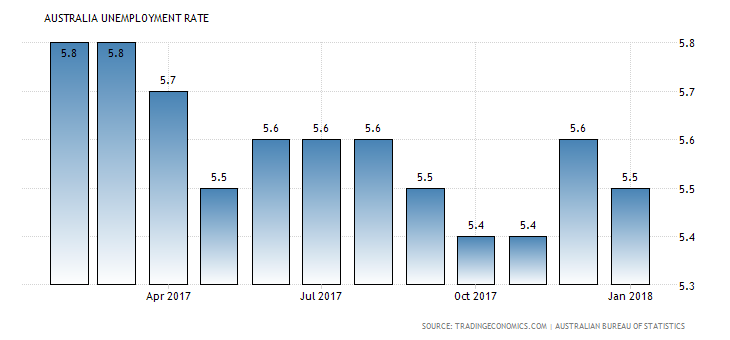The Australian labor market conditions showed signs of strengthening in the New Year as the economy were adding more jobs than expected while the unemployment rate edged lower.
However, most of the gains in the employment were driven by an increase in part-time jobs which managed to offset the decline in full-time jobs.

Data from the Australian Bureau of Statistics showed that the Australian labor market continued to expand for sixteen consecutive months. The economy was seen adding 16,000 jobs during the month while the number of people looking for work fell as the participation rate fell to 65.5%.
Full time jobs were seen falling 49,800 during the month. However, the decline was not alarming as there was a strong increase in the full time jobs during the previous months. Part-time jobs were seen rising 66,000.
The decline in the participation rate was a bit concerning for economists as it is expected to signal a pause to the strong trend in the rise of full-time jobs. However, economists are not reading much into a one-time report for the moment.
The number of hours worked was seen falling 1.4% while the annual rate of change fell to a 0.5% increase. This was lower than the 3.2% increase that was seen previously.
The Australian unemployment rate was seen falling from 5.6% in December 2017 to 5.5% in January 2018. The December’s unemployment rate was revised higher. Overall, the unemployment rate was seen holding steady within the 5.4% and 5.6% band for the past nine months.

Australia Unemployment Rate: 5.5%, Jan 2018 (Source: Tradingeconomics.com)
According to the Reserve Bank of Australia, the full time employment target is set to 5.0%. Based on the data from the month of January, the Australian labour market is expected to still have some spare capacity left.
The improvement in the labor market comes amid a surge in business conditions and profit. But on the other hand, most businesses were seen to be reluctant to raise wages on fears of intense competition.













Leave A Comment